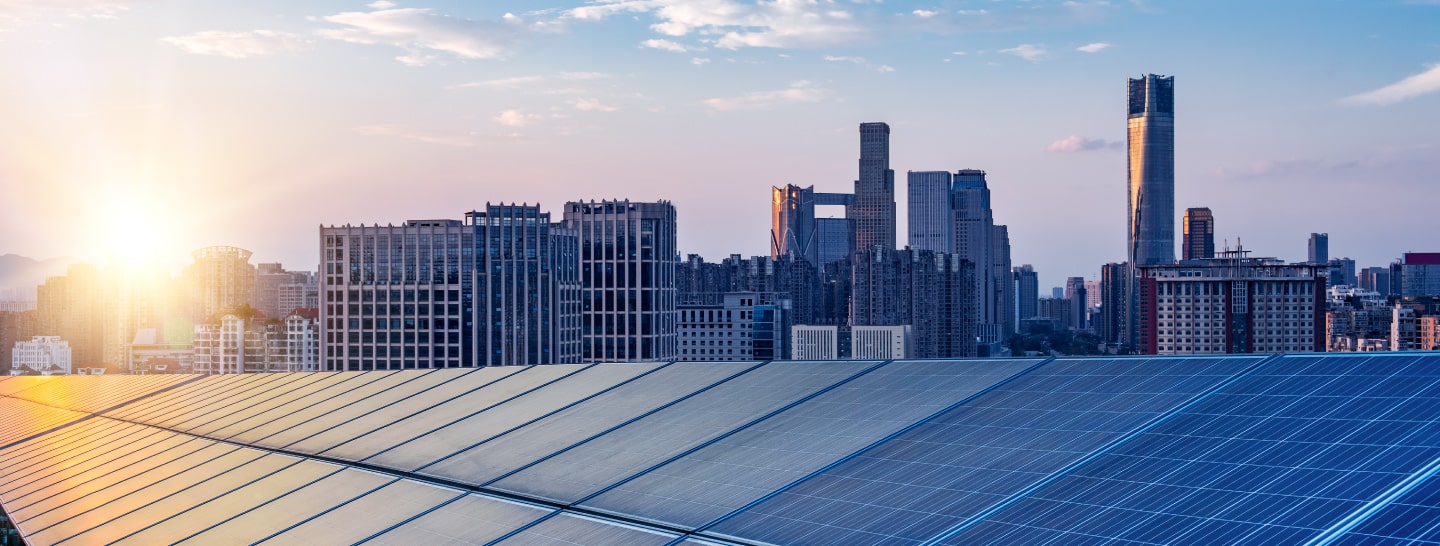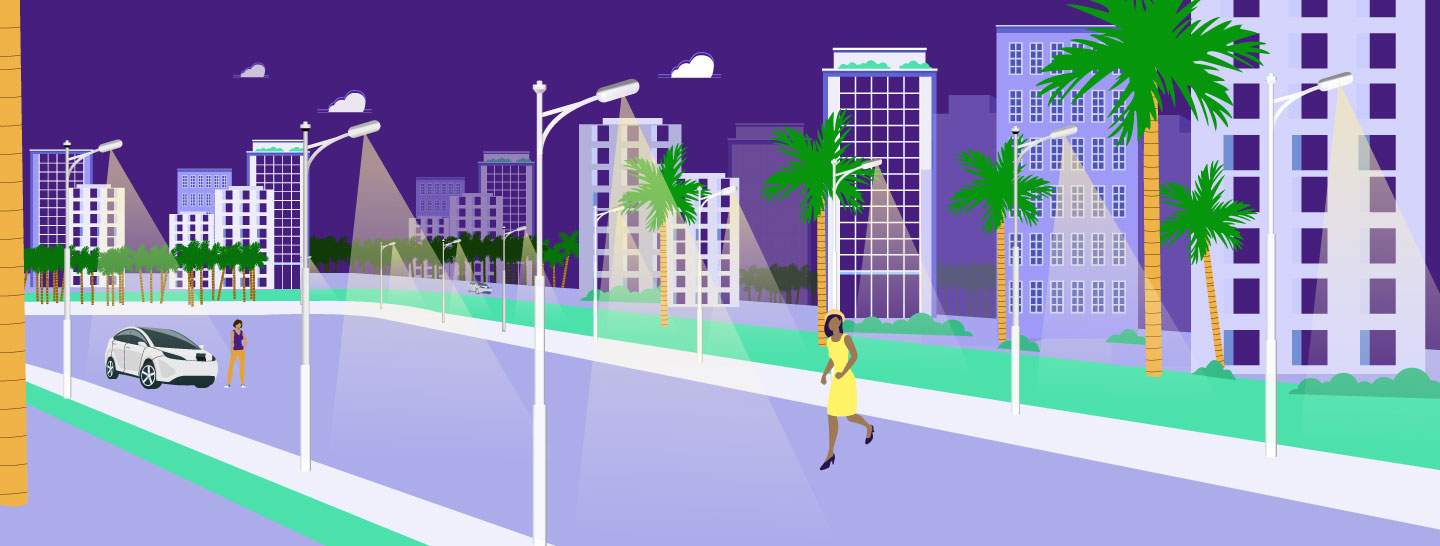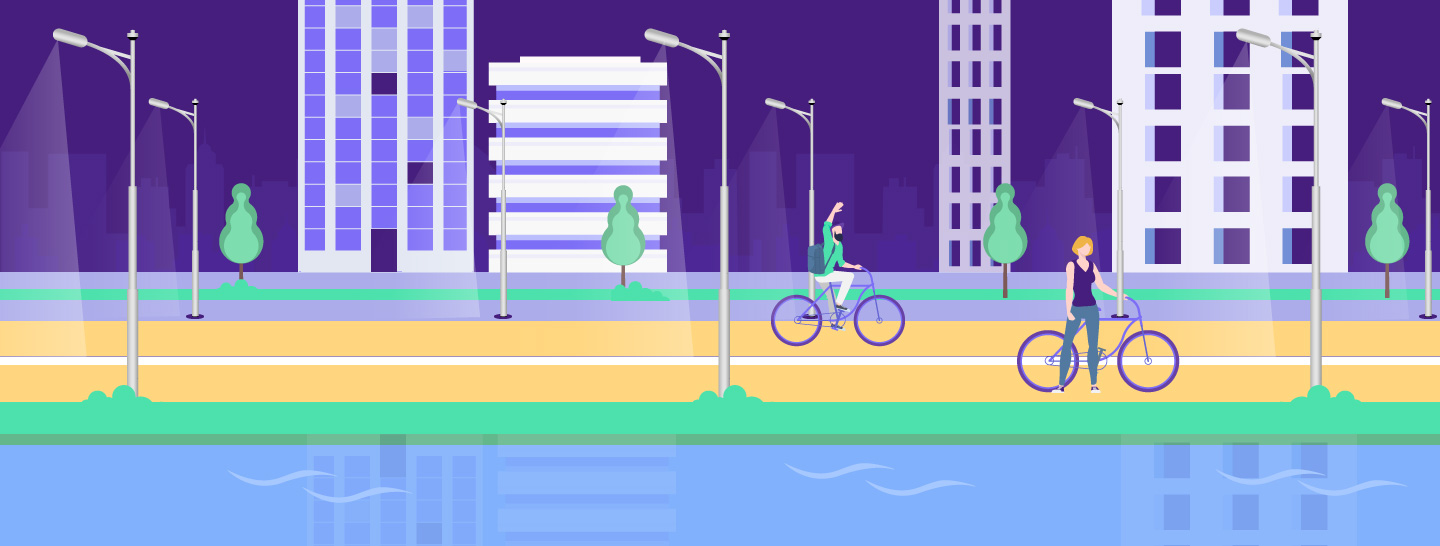What are the benefits of green urbanism?
More than half of the world’s population lives in cities - a figure that is rapidly climbing. Cities have, for the most part, not adapted successfully to take in all these new residents. Urban sprawl, pollution and poor mobility are just some of the consequences. Green urbanism takes on these challenges, promoting solutions that contrast the negative effects of urban development and at the same time generate many benefits, including:
- Mitigating climate change. By increasing green areas in urban centers, green urbanism strengthens cities’ emissions-absorbing capabilities, helping naturally reduce urban temperatures;
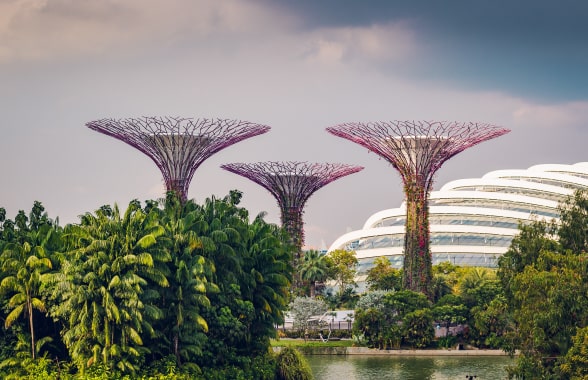
- Helping promote well-being and good health. Creating green spaces in cities helps improve community well-being. Scientific research has shown that people who live near green areas are more physically and socially active, healthier and happier than those who don’t;
- Reducing stress, which also helps peoples’ health. By taking new approaches to urban transportation - including promoting public alternatives, electric mobility, bike riding and walking - green urbanism helps reduce noise and air pollution, key stress factors;
- Cutting emissions from transport. By encouraging the development of local food production, green urbanism helps reduce the need for transporting food over long distances, which generates significant amounts of GHG emissions;
- Promoting social inclusion by creating spaces for people to meet, socialize and have fun;
- Improving real estate values. Studies have shown that the value of buildings and apartments located near green spaces is higher than for those that are not;
- Favoring integration. Green urbanism promotes mixed-use residential and business spaces that bring together people of different economic and professional backgrounds, which helps promote vibrant communities.
- Reducing waste and promoting clean energy. With its focus on sustainability, green urbanism promotes initiatives - like recycling - that cut back on waste production while at the same time encouraging energy efficiency in buildings (also through refurbishment of existing stock) and use - as well as production - of renewable energy, leading to cleaner air in cities.
What are the 15 principles of green urbanism?

- Climate and context. The first principle refers to the need to understand a site’s unique climate conditions and constraints, such as orientation, prevailing wind direction and topography, to be able - for instance - to orient buildings so they gain the maximum amount of solar radiation.
- Renewable energy for zero CO₂ emissions. Sustainable cities must become self-sufficient in terms of energy production and promote renewable power - like solar, wind and biomass - as a substitute for fossil fuels. Also, cities should aim for decentralized energy distribution so that users can also become producers.
- Zero-waste city. To be truly sustainable, cities must operate in a circular, closed-loop manner, avoiding the creation of waste - for example, by promoting recycling and composting - and, when that fails, turning waste into a resource.
- Water. Green urbanism requires that cities operate closed urban water management systems that guarantee a high quality of water and low wastage. Water consumption should be reduced and runoff water management and drainage systems optimized.
- Landscape, gardens and urban biodiversity. Sustainable cities use landscapes, urban gardens and rooftops in order to maximize local biodiversity. Greening urban rooftops and spaces assists in fighting the rise of urban heat islands - areas where temperatures exceed those of surrounding areas - and green spaces, like parks, improve residents’ physical as well as mental well-being.
- Sustainable transport and good public space: compact and poly-centric cities. To be sustainable, a city must reduce private mobility in favor of public transport as well as walking, biking and other physical activities that are beneficial to health. The transport sector alone generates some 20% of GHG emissions.
- Local and sustainable materials with less embodied energy. This principle calls for construction using locally- and regionally-sourced materials with less embodied energy. The aim is to shorten the supply chain for the building sector and focus on low-environment-impacting and recycled materials, as well as waste reduction.
- Density and retrofitting of existing districts. Green urbanism encourages the retrofitting of older buildings and districts in order to keep people in city centers and limit greenfield developments, which are destructive to nature. Building strategies should focus on compact design - developing vertically rather than horizontally - and promoting energy efficiency.
- Green buildings and districts, using passive design principles. Here the aim is to ensure the application of passive design in building. Passive design means exploiting natural light, heat and air movements to create comfortable interiors, minimizing energy use to - for example - light, heat and cool buildings.
- Livability, healthy communities and mixed-use programs. Green urbanism calls for creating vibrant, integrated and cohesive communities, achievable through solutions like affordable housing and mixed-use developments, which create the conditions for increased social sustainability and social inclusion, helping to repopulate city centers.
- Local food and short supply chains. Sustainable cities should ensure adequate land for local food production, with an emphasis on urban farming and agriculture, coupled with “eat local” and “slow food” initiatives. Shortening food supply chains reduces the need for logistics, cutting back emissions of CO₂ and pollutants.
- Cultural heritage, identity and sense of place. In order to support the health, safety and activities of their residents, cities must develop master plans that balance heritage with conservation and development, while encouraging a sense of unique character/identity and place.
- Improved urban governance, leadership and best practice. To be sustainable, a city must activate and utilize networks and skills that engage the local community and key stakeholders. Change should be harmonious and decision-making shared between authorities and citizens.
- Education, research and knowledge. To be sustainable, cities must invest in education, as well as in technical training and up-skilling for green jobs, and promote sustainable design. Primary and secondary schools need to develop programs to teach children sustainable behaviors.
- Strategies for cities in developing countries. To promote sustainability in developing countries, ad hoc strategies are required to deal with - for example - rapid urbanization and poverty reduction, and to meet the need for adequate low-cost housing to contrast the spread of informal settlements and urban slums.
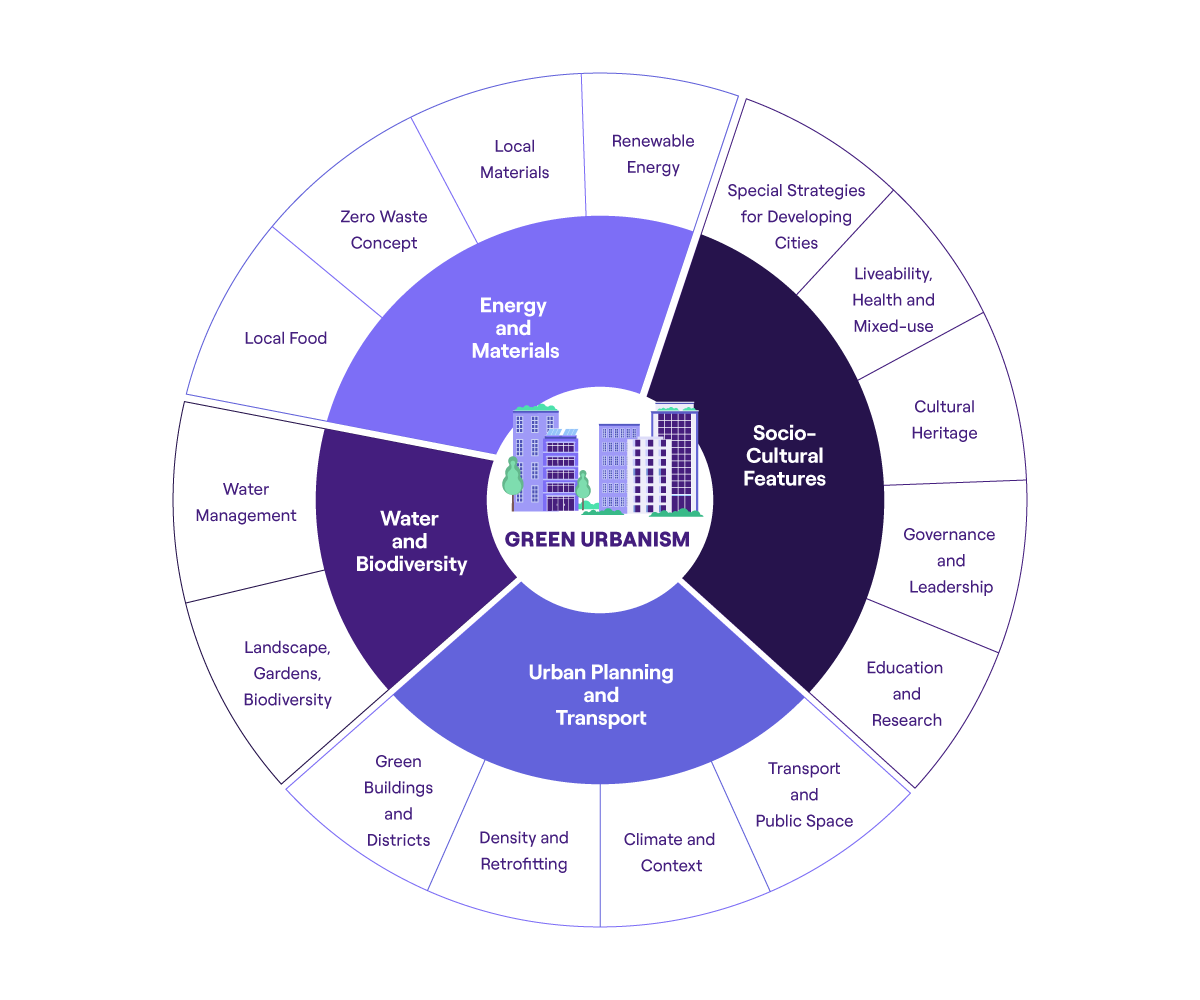
How to achieve sustainable and eco-friendly cities?
To achieve sustainable and eco-friendly cities and to contribute to a green urban development, policymakers and urban designers must engage in environmentally friendly city planning - based on the 15 principles of green urbanism - including implementing a circular economy and promoting low-emissions public transportation, urban biodiversity and renewable energy. For example in 2022, the world’s most sustainable city - according to the “Sustainable Cities Index” - was Oslo. The 2022 Index - published by Arcadis, - examined 100 cities from 47 countries. According to Arcadis, “In order to be truly sustainable, cities must look beyond economic development to the health of their natural environment and the quality of life of the people that live there. Without a thriving urban landscape that puts the planet first while providing inclusive opportunities for its citizens, no city can position itself for long-term success, and its prosperity cannot, therefore, be sustained.”
Following this logic, the Norwegian Capital won the accolade for:
- Its abundance of environment-friendly public transport solutions
- Its many green spaces
- Low energy use
- Clean air
All key factors in determining how sustainable a city is.




